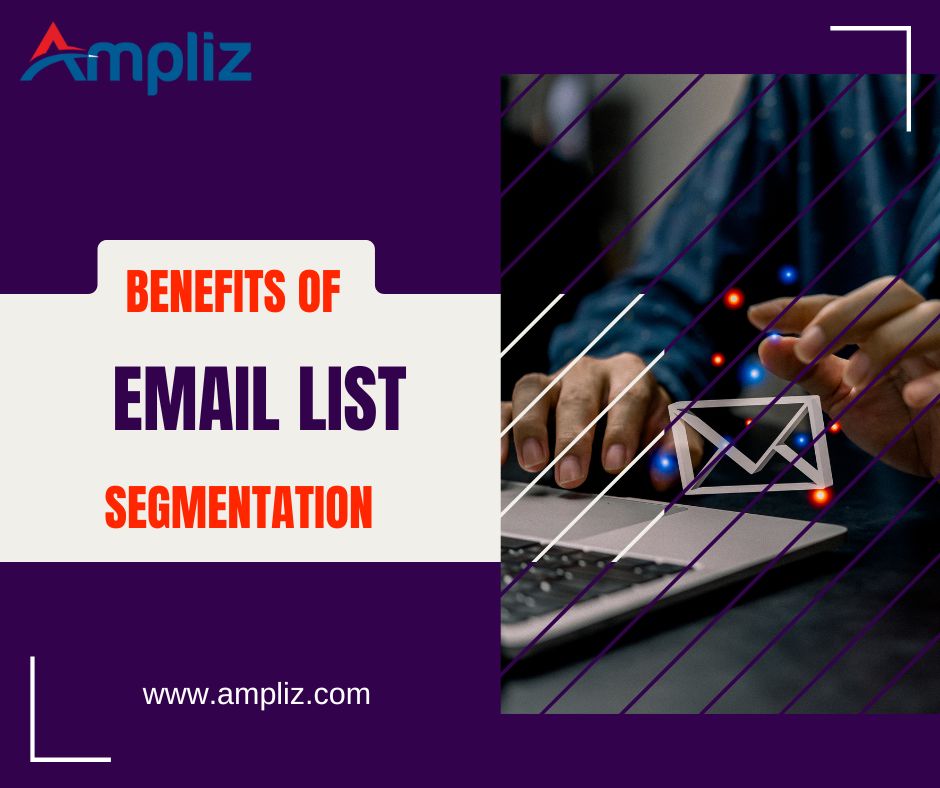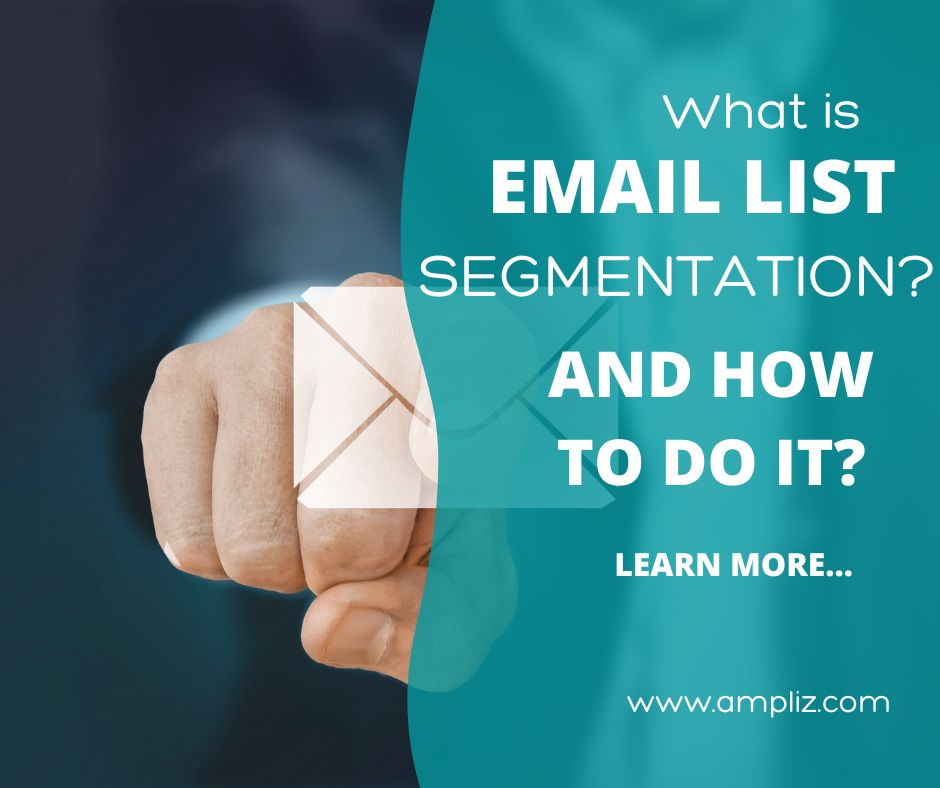Do you know what ruins the engagement of your emails?
The irrelevance of the content.
As soon as the reader feels that the content is irrelevant to him, he will not open your mail next time.
So not only the engagement but your open rate will also decline.
But email list segmentation can prevent this, want to know how?
Read this blog till the end.
Email marketing is one of the great ways of getting leads, but only if you do it properly. To make the best of your email marketing campaign you need to have accurate and updated data that are segregated well for each audience type.
As per Mailchimp’s latest data, the segmented data, the segmented campaigns get 14.37% more opens and 64.78% more clicks.
Segmentation is the secret sauce of an effective email marketing campaign. If you want to leverage email list segmentation but are not sure how to do that, this blog is just for you.
Before we discuss the ways of segmenting the email list, let’s see what is email segmentation and its benefits?
What is Email List Segmentation?
List segmentation in email marketing is the process of dividing your email list into smaller groups based on specific criteria.
By segmenting your email list, you can send more targeted and relevant messages to each group, which can lead to improved engagement and conversions.
There are several ways to segment your email list, including by location, age, gender, interests, or past purchase history.
You can also create segments based on how subscribers interact with your emails, such as whether they open or click through your messages. For those looking to significantly improve the efficiency and reliability of their email marketing campaigns, leveraging a robust SMTP service is essential. One major benefit of using a sophisticated SMTP service is its impact on transactional email delivery, ensuring your emails reach their intended recipients.
The benefits of email segmentation include improved deliverability, higher open rates, and more engaged subscribers. Segmented emails also tend to generate more revenue than non-segmented emails.
As a result, email segmentation is a crucial part of any successful email marketing strategy.
Benefits of Segmenting Email List

When it comes to email marketing, segmentation is key to success. By segmenting your email list, you can send targeted, relevant messages to your subscribers that are more likely to be opened and clicked on. This can lead to more sales and conversions for your business.
As per the report, 35% of Amazon’s revenue comes from targeted recommendations which are more effective with email list segmentation.
Amazon claimed that recommendations via targeted and personalized email helped them to drive more conversions than onsite recommendations.
With over 300 million users, Amazon’s success lies in its ability to segment its massive customer database into specific groups based on their behavior, preferences, purchase history, and demographics.
They target each group with tailored content that resonates with them and encourages them to take action. For example, if you are an avid reader who frequently purchases books from Amazon, you will receive emails promoting new book releases or discounts on books similar to those you have previously purchased. Many Amazon agencies that work for commissions utilize these strategies to help sellers optimize their campaigns, ensuring recommendations align with potential customer interests.
On the other hand, if you are a gamer who regularly buys video games from their website, you’ll get offers for the latest gaming consoles or game titles relevant to your interests.
Let’s see what are benefits email list segmentation offers you that may help you to achieve massive success like Amazon.
1. Increased open rates
When you send targeted emails to specific segments of your list, your open rates will increase. This is because subscribers are more likely to open an email that is relevant to them.
2. Higher click-through rates:
Segmented emails also have higher click-through rates than non-segmented emails. This is because subscribers are more likely to click on a link in an email that is relevant to them.
3. More engaged subscribers
By sending relevant emails to specific segments of your list, you will keep subscribers engaged with your content. This will keep them coming back for more, and they may even tell their friends about your business.
4. Increased ROI
When done correctly, segmentation can lead to a higher return on investment for your email marketing campaigns. This is because you can target your campaigns specifically at those who are most likely to convert into customers or clients.
How to Collect the Data You Need for Segmentation
If you want to be successful with email marketing, segmentation is crucial. But how do you collect the data you need to segment your audience?
There are a few different ways to collect data for segmentation:
1. Use web forms
You can use web forms to gather data from people who visit your website. Include fields on your form that asks for information like job title, company size, or industry.
2. Use surveys to collect data from your target market.
You can send surveys via email or use a service. Be sure to ask questions that will help you segment your audience, such as what type of products they’re interested in, how they prefer to receive communication, and what their pain points are. You can also use an AI survey generator to easily build surveys without much work.
3. Look at your existing customer data.
If you already have a database of customers, you can use that information to segment your audience. Look at factors like past purchase history, demographics, and even social media activity to help you group people.
4. Use third-party data sources.
Several companies offer demographic and psychographic data that can be helpful for segmentation. One of such service providers that is popular, and reliable is Ampliz. Ampliz provides you with the most accurate and real-time updated, and targeted dataset of your target audience.
Once you’ve collected the data you need, you can start creating segments for your email marketing campaigns. Segmentation will help you create more targeted, relevant communications that resonate with your audience and lead.
Types of Email Segmentation
There are multiple different types of email segmentation, the most common of which are discussed below, let’s understand them.
1) Demographics
The very first types of email segmentation is demographic. You have to segment your audience based on their age, gender, their income level, their company position. These data greatly influence their purchase decision, and therefore you need to be very careful in this segmentation.
You can get these details during the signup process, but mind it you can’t ask so many questions in sign-up. You can have a maximum of 3 fill-ups for the sign-up process otherwise, the user won’t feel safe to give such details.
To avoid such incidents, develop sign-up forms based on your business. If you are in B2B business, then asking about a company position is a must but if you are in the property or big asset business then, it’s important to ask about income and age.
2) Email Engagement
Email engagement is another deciding factor in email list segmentation. For this, two important matrices you have to consider are open rate and click-through rate. For this, you should segment the mail into two categories, namely the people who have opened it and the people who have not opened any of the mail in the last 3 months.
This will give you a clear picture of your active and inactive users. You can then retarget your inactive users with specialized campaigns.
Or you can run a specialized campaign for your active users for announcing a sale. You can further categorize them into two categories as interested and non-interested audiences based on their engagement with your mail.
You can send more specialized mail to likely to buy people.
3) Geographic Location
The geographic location of your subscribers is one of the most important factors to consider when segmenting your email list. After all, what works in New York City may not work in Los Angeles. By segmenting your list by geographic location, you can ensure that your emails are relevant to every subscriber.
There are a few different ways to segment your list by geographic location.
The first is to simply divide your list into different regions. For example, you could have a separate email list for subscribers in the United States, Canada, Europe, Australia, and so on.
Another way to segment your list by geographic location is to target specific cities or states. This is especially effective if you have brick-and-mortar locations in those areas.
Finally, you can also segment your list by time zone. This is especially important if you have subscribers all over the world.
4) Purchase History
Segmentation based on history is critical to the success of email marketing.
One of the best examples is Amazon. As discussed above, with the help of email and website recommendations based on history, Amazon is driving about 35% of its revenue.
You can segregate your past buyers with their products and send them emails recommending to other related products.
5) Amount spent
This is also a decisive factor when it comes to segmenting your email list. When you sell products with considerable price differences, you must track the customers’ expense history.
This will help you to divide the customers likely to buy low-priced items and expensive items.
And you can personalize your emails by featuring products that are actually in the range of your audience.
Conclusion
Segmentation is a key element of successful email marketing campaigns. By segmenting your target audience into different groups and targeting them with specific content, you can increase engagement and open rates while also ensuring that each message resonates with the right people.
Investing in segmentation will not only help maximize profits but will also give customers an enhanced experience as they receive relevant messages tailored to their interests. Investing in segmentation for email marketing is worth the effort!
FAQs: Segmentation in Email Marketing
1) How to segment your email list
Segmenting your email list is a crucial step in optimizing your email marketing campaigns. By dividing your subscribers into smaller groups based on specific criteria, you can create more targeted and personalized messages that are relevant to their interests and needs. Here are some steps to help you segment your email list:
1. Define
Your Segmentation Criteria: Start by identifying the factors that differentiate your subscribers from each other. This could be anything from demographic information (age, gender, location) to behavior (past purchases, website interactions).
2. Gather Data:
Collect data on these segmentation criteria through sign-up forms or surveys.
3. Split Your List Into Smaller Groups:
Once you have collected sufficient data, divide your email list into smaller segments based on the identified criteria.
4. Create Targeted Campaigns:
With a segmented list in hand, tailor specific campaigns for each group of subscribers based on their unique characteristics and preferences.
5. Test & Optimize Your Campaigns:
Monitor how well each campaign performs with its respective audience and test different approaches until you find what works best for each segment.
By following these steps, you’ll be able to deliver more personalized content to your subscribers which will ultimately lead to better engagement rates and conversions for your business!



